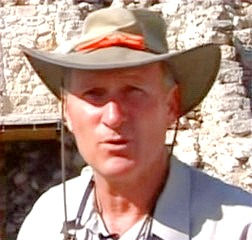Yom Kippur Afterthoughts
- Shalom Pollack

- Sep 29, 2020
- 2 min read
![Illustration: Twin Synagogues of Nahalat Shiva Jerusalem by Morany84 - Own work [CC BY-SA 4.0] via Wikimedia](https://static.wixstatic.com/media/09570e_7bf25db3f41947d292248d5e5893e4c9~mv2.jpg/v1/fill/w_980,h_592,al_c,q_85,usm_0.66_1.00_0.01,enc_avif,quality_auto/09570e_7bf25db3f41947d292248d5e5893e4c9~mv2.jpg)
Illustration: Twin Synagogues of Nahalat Shiva Jerusalem by Morany84 - Own work [CC BY-SA 4.0] via Wikimedia
This was the first Yom Kippur — and hopefully the last — in the era of COVID-19, the China virus.
Each year, I notice how the shul I daven in becomes a magnet for non-religious Israelis at the opening and ending of the day: at Kol Nidre and at Neila. They are obviously not "in their element" as they peep into windows, loiter outside, sometimes rows deep, wearing what they deem appropriate for this strange occasion; yet, they are pulled to the moment.
What is the attraction? Each year I look at the faces of those drawn to the synagogue two times a year — and actually both times on the same day.
I wonder what it means. They are part of the Jewish People — my People. They seem to be clinging to the last strands that connect them to the "old time religion." Are they covering their bets? Maybe there is something to this day of forgiveness after all?
Could they be exhibiting a sign of solidarity with our traditions that have always defined us as a People?
This year the action took place outdoors as all the shuls were locked.
This brought the drama to the streets. I am told that the Arnona neighborhood, where I have lived for the last 15 years, was totally secular not long before I arrived.
The rabbi of the main shul in which I daven — and now there are many smaller ones too — told me that 30 years ago it was difficult to gather a minyan.
Today, a good number of the residents are observant. There are many North American and European immigrants who brought the "old religion" to this secular Israeli neighborhood. In the streets this year, many minyanim contributed to the special sounds and sights of this special day: Ashkenazi; Sephardi; Chabad.
But to get back to the twice-a-year visitors; yes, they came seeking to commune with what they may feel ambivalent towards during the year. The pintele Yid (inner spark of a Jew)? The pintele Yid in Israel is different from his counterpart outside of Israel.
Outside Israel, the streets are not closed on Yom Kippur. It is not a national Holy Day. Commerce and government do not shut down. The media does not shut down. The public arena does not change for a moment. The language of prayer is not their mother tongue.
And the pintele spark in the heart of Diaspora Jews? It must overcome a multitude of obstacles and distractions for it to be ignited, even for a fleeting moment. Yes, this Yom Kippur gave me food for thought about our People — here and abroad.

Contact Shalom Pollack, veteran licensed tour guide, for upcoming tours at Shalom Pollack Tours: Personalized Tours in Israel. For information and details of upcoming tours, email him here. Click here to read more of this writer’s work in The Jerusalem Herald.



































Comments